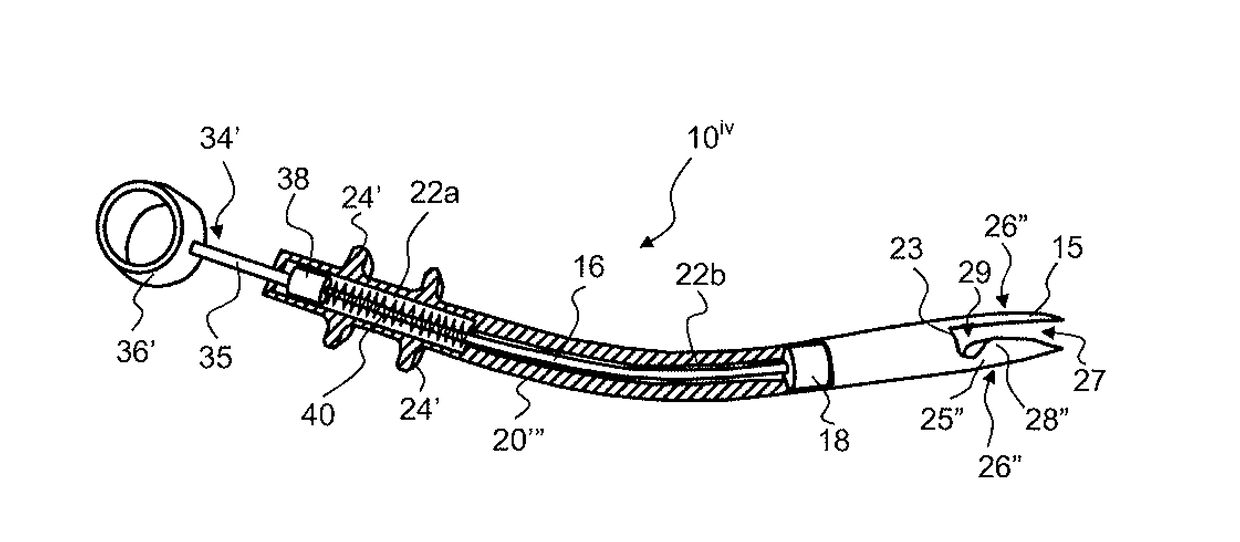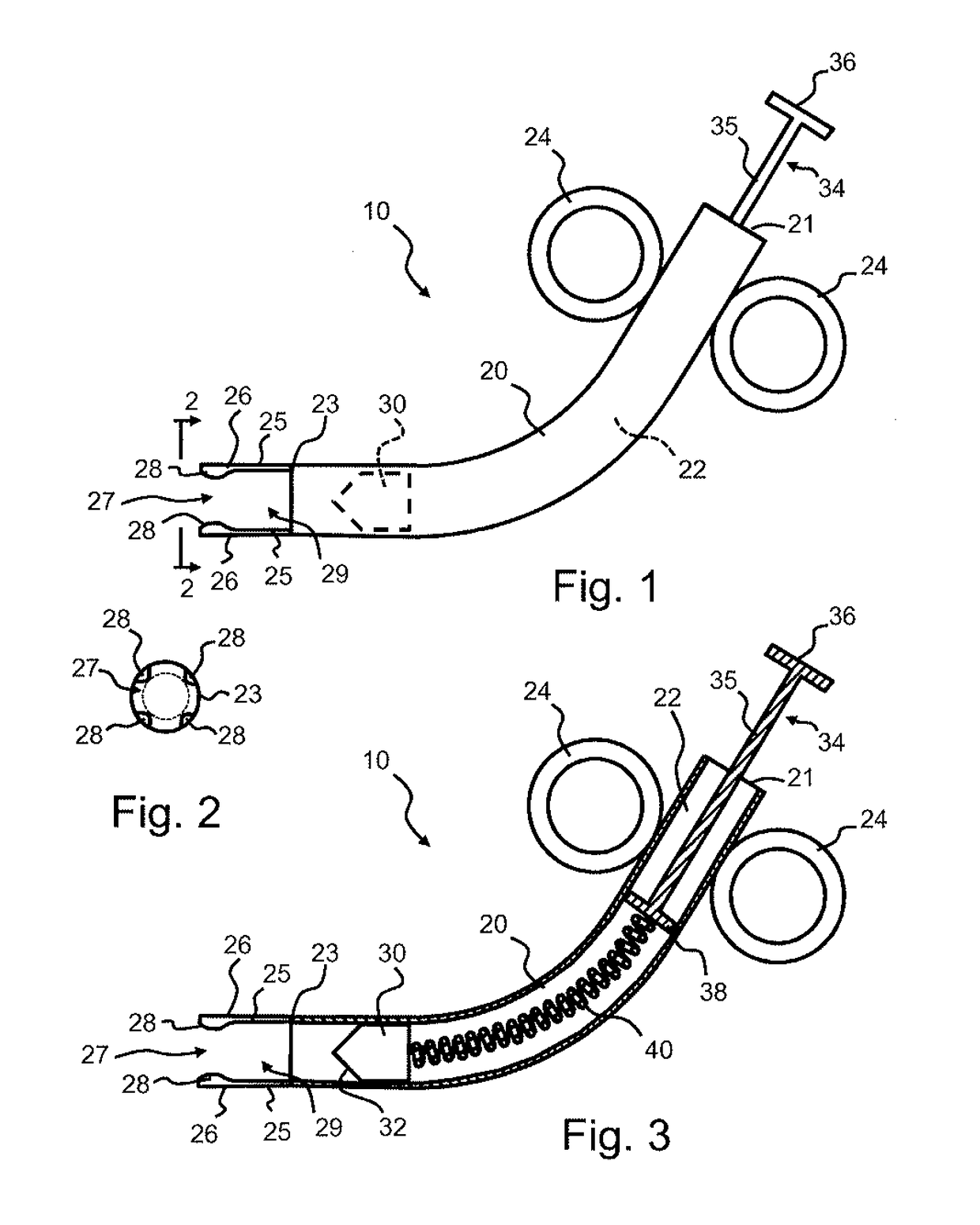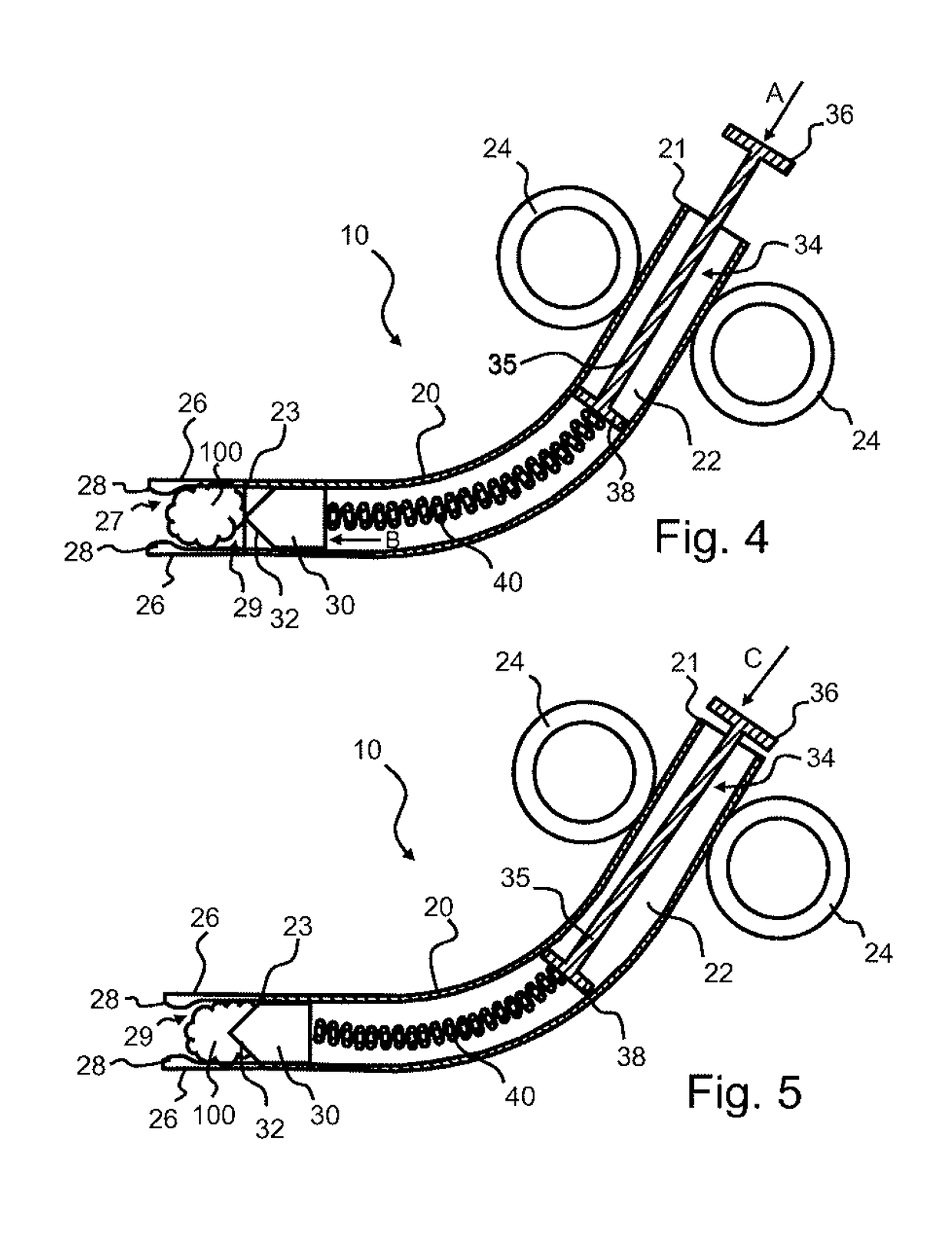Transection device
a transverse device and a technology for tracing, which are applied in the field of transverse devices, can solve the problems of affecting the functionality of the connection to the body, irregular and difficult management, excessive handling, etc., and achieves the effects of facilitating the management of the anastomose, reducing complications, and saving time in the operation
- Summary
- Abstract
- Description
- Claims
- Application Information
AI Technical Summary
Benefits of technology
Problems solved by technology
Method used
Image
Examples
Embodiment Construction
[0017]In the drawings, like numerals indicate like elements throughout. Certain terminology is used herein for convenience only and is not to be taken as a limitation on the present invention. The following describes preferred embodiments of the present invention. However, it should be understood, based on this disclosure, that the invention is not limited by the preferred embodiments described herein.
[0018]Referring to FIGS. 1-5, an exemplary transection device 10 in accordance with an embodiment of the invention will be described. The transection device 10 includes a tubular body 20 extending from an open proximal end 21 to an open distal end 23 with a hollow chamber 22 defined therebetween. While the ends 21, 23 are illustrated as opened, it is recognized that either end may be closed or sealed other than the passage of the plunger or blade as described hereinafter. In the illustrated embodiment, the body 20 has a curved configuration with the axis of the proximal end 21 angled a...
PUM
 Login to View More
Login to View More Abstract
Description
Claims
Application Information
 Login to View More
Login to View More - R&D
- Intellectual Property
- Life Sciences
- Materials
- Tech Scout
- Unparalleled Data Quality
- Higher Quality Content
- 60% Fewer Hallucinations
Browse by: Latest US Patents, China's latest patents, Technical Efficacy Thesaurus, Application Domain, Technology Topic, Popular Technical Reports.
© 2025 PatSnap. All rights reserved.Legal|Privacy policy|Modern Slavery Act Transparency Statement|Sitemap|About US| Contact US: help@patsnap.com



